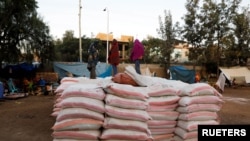A humanitarian disaster is brewing in Ethiopia’s Tigray region and the neighboring regions of Afar and Amhara. Nine months of fighting between militant groups supporting the Tigray People’s Liberation Front and the Ethiopian National Defense Forces have left Tigray’s civilian population with few resources. By early June, up to 900,000 Tigrayans were facing starvation and 5.2 million people, nearly 90 percent of the population, needed food aid.
Hope that conditions might improve arrived on June 28, when the Ethiopian Government announced a unilateral humanitarian cease fire and the withdrawal of Ethiopian National Defense Forces from Mekelle. However, Tigray remains cut off from vital services, including humanitarian delivery of food and fuel. Roads into the region have been blocked off, a bridge that served as the only land conduit into central Tigray was destroyed, and requests for permits to fly humanitarian aid from Addis Ababa to Tigray have been ignored.
The expansion of the conflict into neighboring regions of Amhara and Afar has also taken its toll, with hundreds of thousands of internally-displaced persons in these regions in dire need of humanitarian assistance. Eritrean refugees in northern Ethiopia have also been attacked both by the Eritrean Defense Forces and by militants associated with the Tigray People’s Liberation Front – attacks the United States condemns in the strongest possible terms. USAID is committed to helping the people of Ethiopia by continuing to provide life-saving assistance, including in Amhara and Afar, as security allows.
“The flow of humanitarian assistance [to Tigray] remains woefully insufficient. This shortage is not because food is unavailable, but because the Ethiopian Government is obstructing humanitarian aid and personnel, including land convoys and air access,” said USAID Administrator Samantha Power.
UN Secretary General Antonio Guterres noted that “Humanitarian organizations require roughly 100 trucks worth of assistance and supplies to reach Mekelle every day. Yet, since mid-July, an average of less than 10 trucks per day have been able to get through.”
According to the United Nations, if aid delivery does not resume soon, there will be an imminent threat to the lives of hundreds of thousands of people, while hundreds of thousands more are poised to slide into starvation.
“The U[nited] S[tates],” said Administrator Power, “calls on the Ethiopian Government to immediately allow humanitarian assistance to swiftly move into Tigray in order to prevent a catastrophic stop to food assistance that millions need to survive.”














